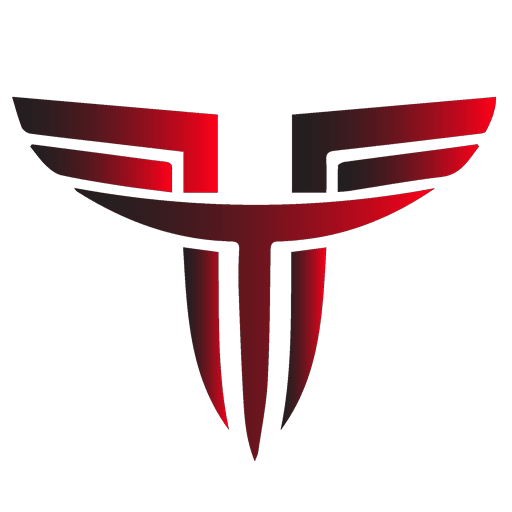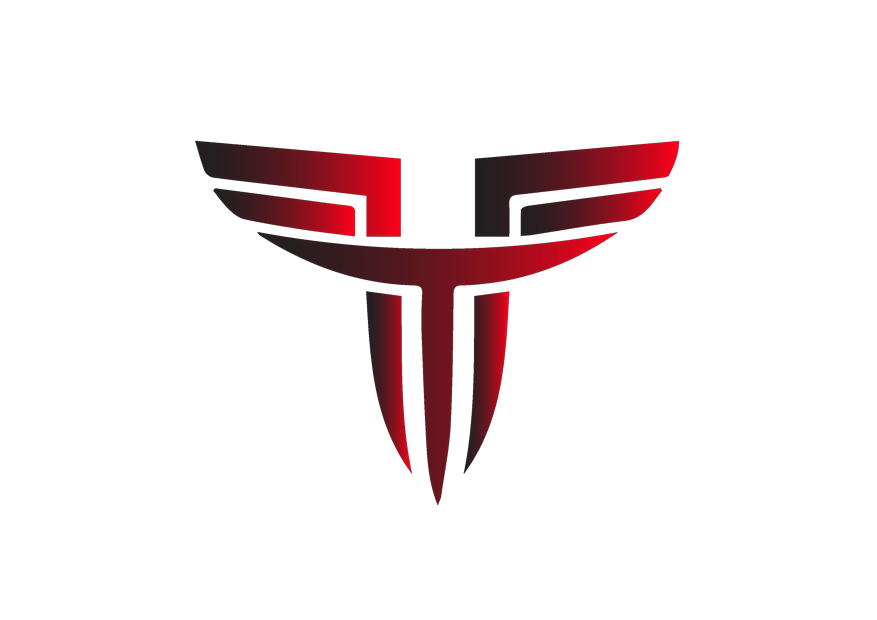
Here’s something that kept me up last night: right now, someone is asking ChatGPT about your industry. They’re researching solutions, comparing options, maybe even typing your competitor’s name alongside yours. What does ChatGPT tell them?
Most brands have no idea. They’re still playing yesterday’s game while their customers have already moved to a new field entirely.
The Search Revolution Nobody Prepared For
Remember when we all obsessed over Google rankings? Those days feel almost quaint now. More than three-quarters of people now use ChatGPT as a search engine, and the shift happened faster than anyone predicted. We’re talking about 3.6 billion monthly visitors, which puts it at roughly 5% of Google’s traffic and climbing.
But here’s what makes this different from every other platform shift we’ve weathered. There’s no page two in ChatGPT. Your brand either appears in the answer, or it doesn’t exist at all. Binary. Final. Brutal.
Think about that for a second. On Google, even if you ranked on page three, you still had a shot. Someone determined enough might click through. ChatGPT doesn’t work that way. Either you’re mentioned as an answer or you’re invisible. The game has fundamentally changed, and most brands are still learning the old rulebook.
What Happens When You’re Not in the Room
I’ve been thinking a lot about narrative control lately. When you’re not part of the conversation ChatGPT is having about your industry, someone else fills that void. Usually not in ways you’d prefer.
Your competitors show up. Old negative press resurfaces. Outdated information gets treated as current truth. Customer complaints from three years ago become the defining story of your brand. Meanwhile, all the great work you’ve done, the problems you’ve solved, the customers you’ve delighted? Nowhere to be found.
Brands with a weak digital footprint get excluded from the chance to inform responses, and competitors, negative media coverage, outdated sources, misinformation and user reviews fill those narrative gaps. It’s not malicious. It’s just how AI works when you haven’t given it better material to work with.
The cost isn’t just pride. Thirty-six percent of people have discovered a new product or brand through ChatGPT, with Gen Z leading at 47%. That’s discovery happening without you. That’s revenue walking past your door because AI didn’t know to point them your way.
The Trust Transfer Is Already Happening
Something fascinating happened in the data recently. Three in ten people now trust ChatGPT more than Google for finding information. Let that sink in. We spent two decades building trust in search engines, and AI earned a third of that confidence in under three years.
Why?
- Because conversations feel more natural than clicking through blue links.
- Because people prefer asking questions instead of guessing keywords.
- Because ChatGPT meets them where they already think, in full sentences and follow-up questions.
Users are turning to AI assistants for product suggestions, service providers, and B2B solutions. When your brand shows up in those recommendations, it arrives with something powerful: third-party validation. Buyers perceive AI as unbiased. Your appearance isn’t an ad they can dismiss or SEO they can skeptically ignore. It feels like a neutral recommendation, which makes it exponentially more valuable.
Why Your Executive’s Reputation Matters More Than Ever
Here’s something most brands miss entirely. When ChatGPT talks about your company, it often mentions your leadership too. Your CEO’s digital footprint directly impacts how your brand appears in AI responses.
Think about the last time you researched a company. You probably googled the founder or CEO, right? ChatGPT does the same thing, except it’s synthesizing that information automatically and weaving it into brand responses. Executive reputation is closely tied to brand perception, as leaders’ names often appear alongside brand responses.
If your leadership team has a thin digital presence, outdated profiles, or worse, negative coverage that hasn’t been addressed, that’s affecting your brand visibility right now. Not tomorrow. Today.
The Mechanics Behind AI Recommendations
Let’s talk about how ChatGPT actually decides which brands to mention. Understanding this isn’t just helpful, it’s essential for building any coherent strategy.
ChatGPT relies heavily on Bing’s search index, especially when browsing is enabled. That’s the foundation layer. But it goes deeper than simple indexing. ChatGPT strongly favors factual, data-driven content over marketing fluff, actively seeking original research, proprietary data, detailed technical content, and first-hand testimonials.
The algorithm essentially looks for consensus. If multiple credible sources mention your brand positively across different platforms, industry publications, review sites, forums, social media—AI interprets that as market validation. This network effect explains why some smaller companies can outperform larger competitors: strategic content distribution and community engagement can create the appearance of market leadership even for emerging brands.
That’s actually encouraging news. You don’t need the biggest budget. You need the smartest strategy.
Commercial Intent Changes Everything
Not all queries are created equal. Research shows commercial queries drive 48 times more brand mentions than informational ones. That’s not a typo. Forty-eight times.
When someone asks ChatGPT “what are the best marketing automation tools?” versus “what is marketing automation?”, those trigger completely different responses. The first includes brand recommendations. The second gets a definition.
Most brands pour resources into educational content, thinking they’re building authority. That matters, but it won’t get you mentioned when purchase decisions are being made. You need content that addresses buyer intent directly. Reviews, comparisons, case studies, specific use cases, that’s what surfaces during commercial queries.
Your Website Alone Won’t Cut It
I’ve seen too many brands assume their website content will naturally flow into ChatGPT responses. It doesn’t work that way, at least not reliably.
ChatGPT’s recommendations reflect digital consensus across multiple credible sources. Your owned media is just one signal among many. What matters more is third-party validation, industry publications writing about you, customers reviewing you, experts recommending you, communities discussing you.
This is why 76% of business owners and marketers say it’s essential for their brand to appear in ChatGPT answers in 2025, and two-thirds plan to increase their focus on AI visibility. They understand the playing field has shifted.
Building Your AI Visibility Strategy
So what actually works? After watching this space evolve and seeing what early adopters have figured out, a few patterns emerge clearly.
First, optimize your owned assets across the entire digital ecosystem. Your website, social media, thought leadership, executive profiles—all of it needs to be accurate, authoritative, and structured for AI discoverability. Structured data helps ChatGPT understand and categorize your content accurately, which dramatically improves your chances of being cited.
Second, invest in third-party credibility. Get mentioned in publications ChatGPT values. Earn reviews on platforms it trusts. Participate in industry forums where real conversations happen. The more visible you are across multiple channels, the more likely your brand gets highlighted.
Third, create genuinely comprehensive content. ChatGPT favors comprehensive resources that demonstrate genuine expertise. Not blog posts that scratch the surface. Deep guides that answer every question someone might have about a topic. The kind of content where someone lands and thinks, “Oh, this is everything I need to know.”
Fourth, focus on the right queries. Build a list of questions your ideal customers actually ask. Map your content to those specific queries. If your content lacks conversational tone or prompt alignment, it may be skipped even if it ranks well on search engines.
The Monitoring Gap Most Brands Ignore
Here’s an uncomfortable truth: you probably have no idea what ChatGPT currently says about your brand. Most companies don’t.
Maintaining visibility requires constant monitoring, with proactive AI-inclusive reputation management helping brands identify and counter misinformation. You need to be testing prompts regularly, tracking which queries trigger your brand, monitoring sentiment in responses, and comparing your visibility against competitors.
ChatGPT sent 243.8 million website visits in April 2025 alone, a 98% increase from January. That traffic is accelerating. The brands tracking their visibility today will have months of optimization advantage over those who wait.
The Small Business Advantage
If you’re reading this and thinking “that sounds expensive,” I have good news. Size isn’t the determining factor anymore.
Small brands can compete in ChatGPT recommendations by focusing on niche expertise through detailed FAQs, local schema markup, and earning mentions on industry forums and AI-training sources like Reddit. You don’t need enterprise budgets. You need focused execution on the things that matter.
A small company with deep expertise, strong community presence, and strategic content distribution can outrank industry giants. I’ve seen it happen. The AI doesn’t care about your company size. It cares about the digital signals that indicate authority and trust.
Beyond ChatGPT: The Broader AI Landscape
ChatGPT isn’t the only AI in town, and smart brands know it. Tracking brand visibility should include other AI surfaces like Gemini and Perplexity, as well as region-specific chat engines. Different platforms pull from different sources and prioritize different signals.
Build your strategy to work across the AI ecosystem, not just one platform. The fundamentals remain consistent, strong owned assets, third-party validation, comprehensive content, strategic monitoring, but the tactical execution varies by platform.
What This Means for Your Marketing Mix
Traditional SEO isn’t dead. Let me be clear about that. You still need to rank on Google. A solid website is still important. You still need all the fundamentals we’ve built strategies around for years.
But AI visibility is now equally critical. Marketing has shifted from being about clicks to being about winning mentions. Your content strategy needs to serve both masters, traditional search engines and AI platforms.
Most businesses should dedicate 70-80% to traditional SEO and 20-30% to AI optimization, adjusting based on industry and audience behavior. That split will likely shift over time as AI search continues growing, but for now, you need both.
The Timeline Problem
Some of you are thinking, “This sounds important, but I’ve got quarterly targets to hit.” Fair. Here’s why you can’t afford to wait.
Nearly 20% of U.S. adults use generative AI tools weekly, and the number is growing rapidly. Meanwhile, ChatGPT is 88% more likely than Google to be used for informational searches. These aren’t future trends. They’re current reality.
Every month you delay is a month where competitors build AI visibility while you don’t. Where customers discover alternatives because AI couldn’t recommend you. Where your narrative gets defined by sources you don’t control.
The brands that start optimizing for AI visibility today will own significant advantages six months from now. The ones that wait will spend that time playing catch-up instead of compounding gains.
Making This Real
I know this feels like a lot. New platform, different rules, unclear ROI. But strip away the complexity and here’s what matters: people are asking AI about your industry right now. You either show up in those answers or you don’t.
Start simple. Test what ChatGPT currently says about your brand. Ask it the questions your customers would ask. See who gets mentioned and why. That baseline tells you where you stand and what needs fixing.
From there, pick one area to improve. Maybe it’s creating more comprehensive content or it’s earning mentions in industry publications. Maybe it’s optimizing your executive profiles. Progress beats perfection every time.
The opportunity here is genuine. We’re at the beginning of a massive shift in how people discover and evaluate brands. The companies that figure this out early will own disproportionate visibility in the years ahead. Those that ignore it will wonder why their competitors keep showing up everywhere while they don’t.
We help brands take control of their story before AI writes it for them. At Hyper Fuel, we’ve spent the past year figuring out what actually moves the needle in AI visibility, not theory, but the tactics that get your name mentioned when it matters most. If you’re tired of wondering what ChatGPT says about your brand and ready to do something about it, we should talk.
Frequently Asked Questions About ChatGPT Brand Visibility
It varies significantly based on your current digital footprint and the strength of your optimization efforts. Brands with strong existing authority might see results within weeks, while those building from scratch typically need several months of consistent effort. The key is maintaining momentum across content creation, third-party mentions, and technical optimization simultaneously.
Absolutely. Since users increasingly trust AI recommendations, negative mentions carry significant weight. The good news is you can influence this by building strong positive signals across trusted sources, addressing legitimate criticisms publicly, and ensuring accurate information dominates your digital ecosystem.
Not necessarily. Many aspects of ChatGPT optimization overlap with strong traditional marketing fundamentals, creating quality content, earning media coverage, building community presence, maintaining accurate profiles. However, specialists can help with technical elements like structured data implementation and AI-specific monitoring strategies.
Traditional SEO focuses on ranking web pages in search results and driving traffic to your site. AI visibility focuses on being cited in AI-generated responses, even if users never click through. The overlap exists in content quality and authority building, but AI places more emphasis on consensus across multiple sources and comprehensive answers.
Comprehensive guides that thoroughly answer questions, original research with proprietary data, detailed case studies with real results, technical content that demonstrates expertise, and authentic user testimonials. The common thread is substance over style, AI rewards depth and accuracy rather than marketing polish.
Yes. While younger users currently lead adoption, AI search is expanding rapidly across all age groups. Building visibility now positions you for when your audience inevitably shifts habits. Plus, younger decision-makers within B2B buying committees are already using AI for research.
No. Unlike search engines with paid advertising options, ChatGPT recommendations are based on the content and signals it finds across the web. You earn visibility through strategic content, third-party validation, and strong digital presence, not paid placement.
Monthly at minimum, weekly if you’re actively optimizing. Track specific queries your customers would use, monitor sentiment in responses, note which competitors appear alongside you, and identify gaps where your brand should appear but doesn’t. This ongoing monitoring lets you spot issues quickly and measure progress accurately.
First, identify where that misinformation originates, outdated press coverage, competitor content, user reviews, or inaccurate databases. Then systematically address it by publishing correct information across multiple authoritative sources, updating official profiles everywhere they exist, and earning fresh coverage that reflects current reality.
Increasingly, yes. Evidence suggests AI platforms transcribe YouTube videos for training data, meaning video content can influence how you’re represented in AI responses. This gives brands another avenue for building visibility, especially if you’re creating educational or thought leadership content.
Track several metrics: percentage of target queries where your brand appears, sentiment of mentions, share of voice versus competitors, and referral traffic from AI platforms. Also monitor indirect indicators like brand search volume increases and sales conversations that mention AI discovery.
Absolutely. AI visibility rewards expertise, community presence, and comprehensive content, not budget size alone. Small brands with deep niche knowledge and strategic content can outperform larger competitors who haven’t optimized for AI. The playing field is surprisingly level right now.





